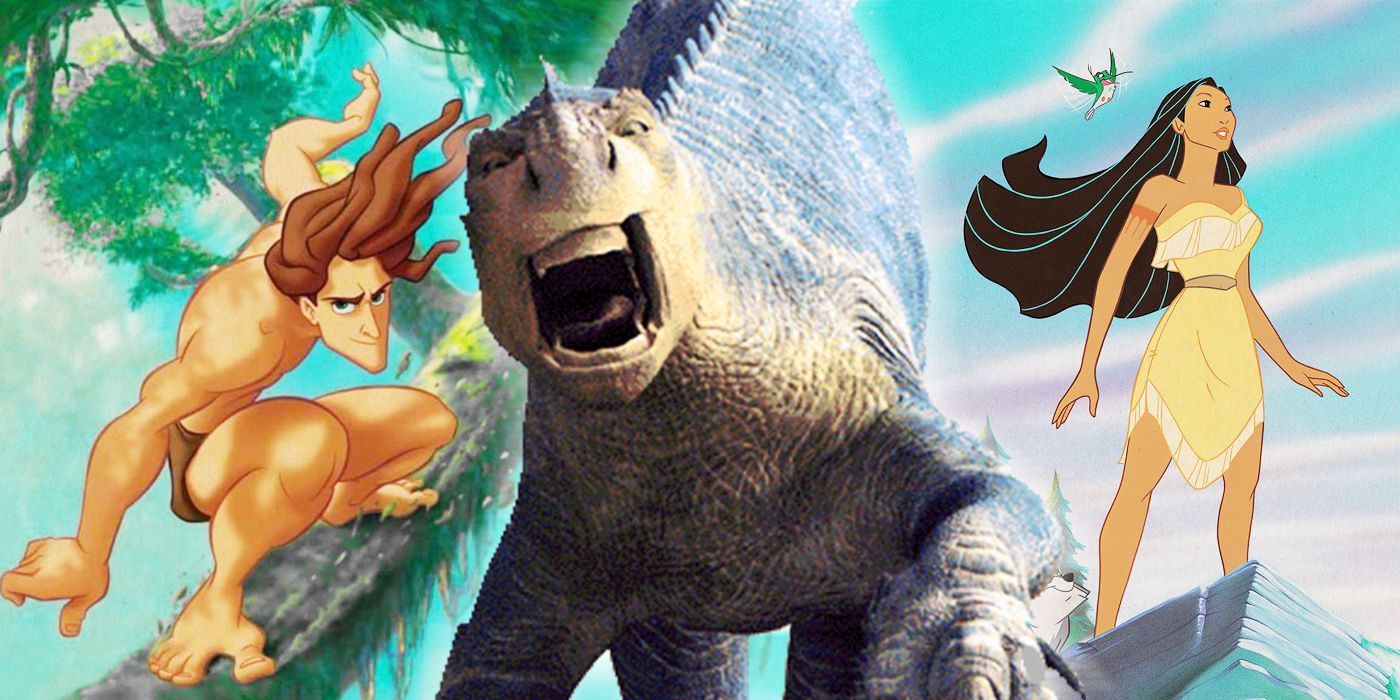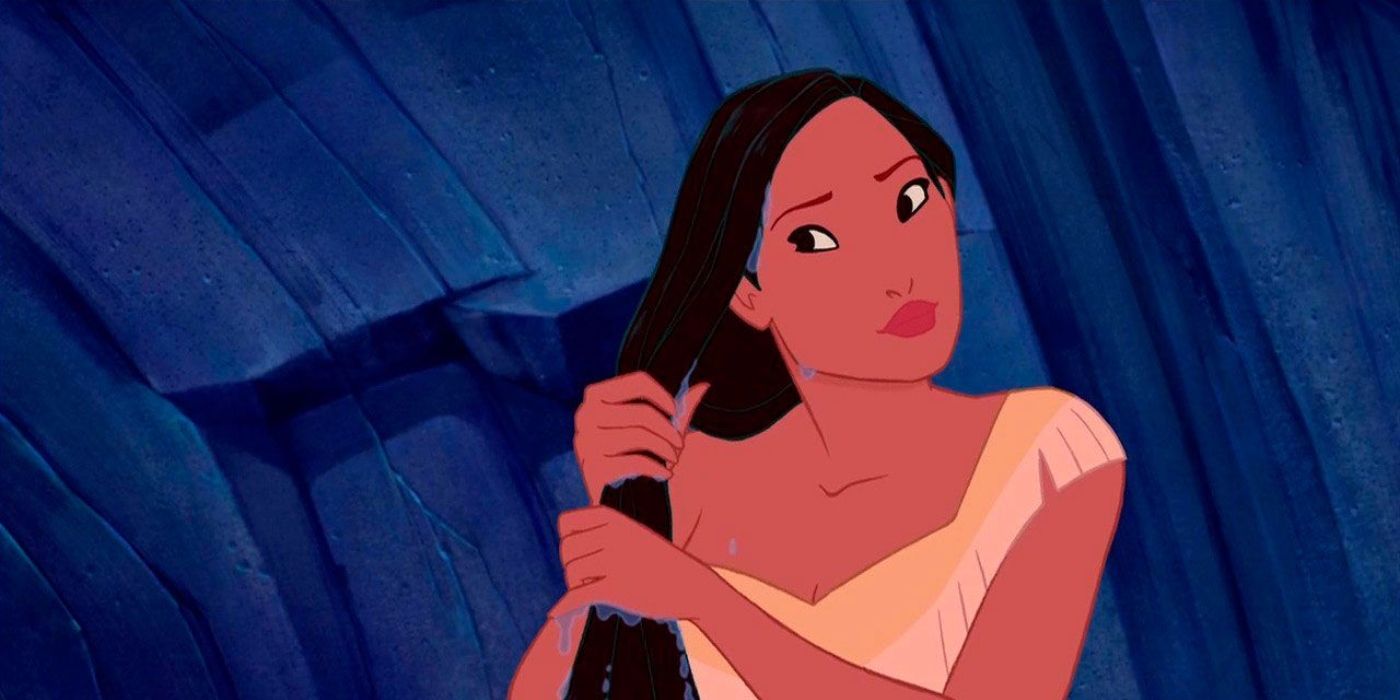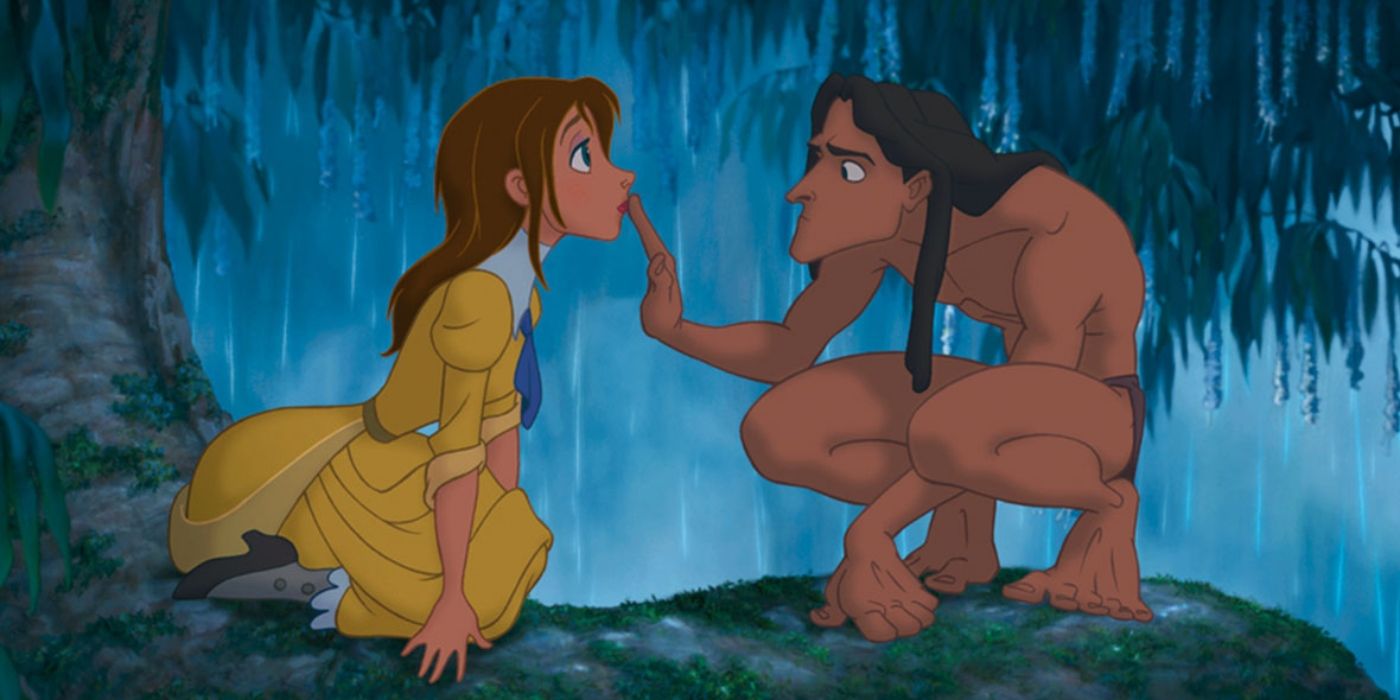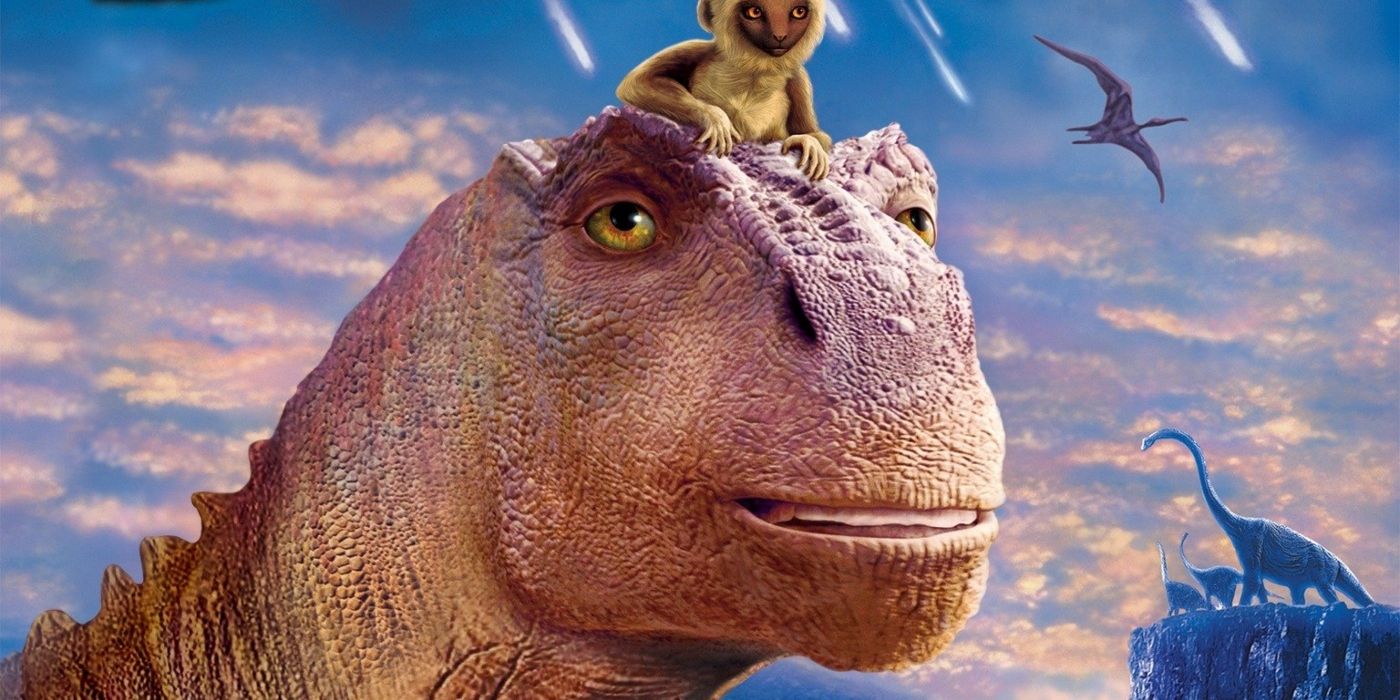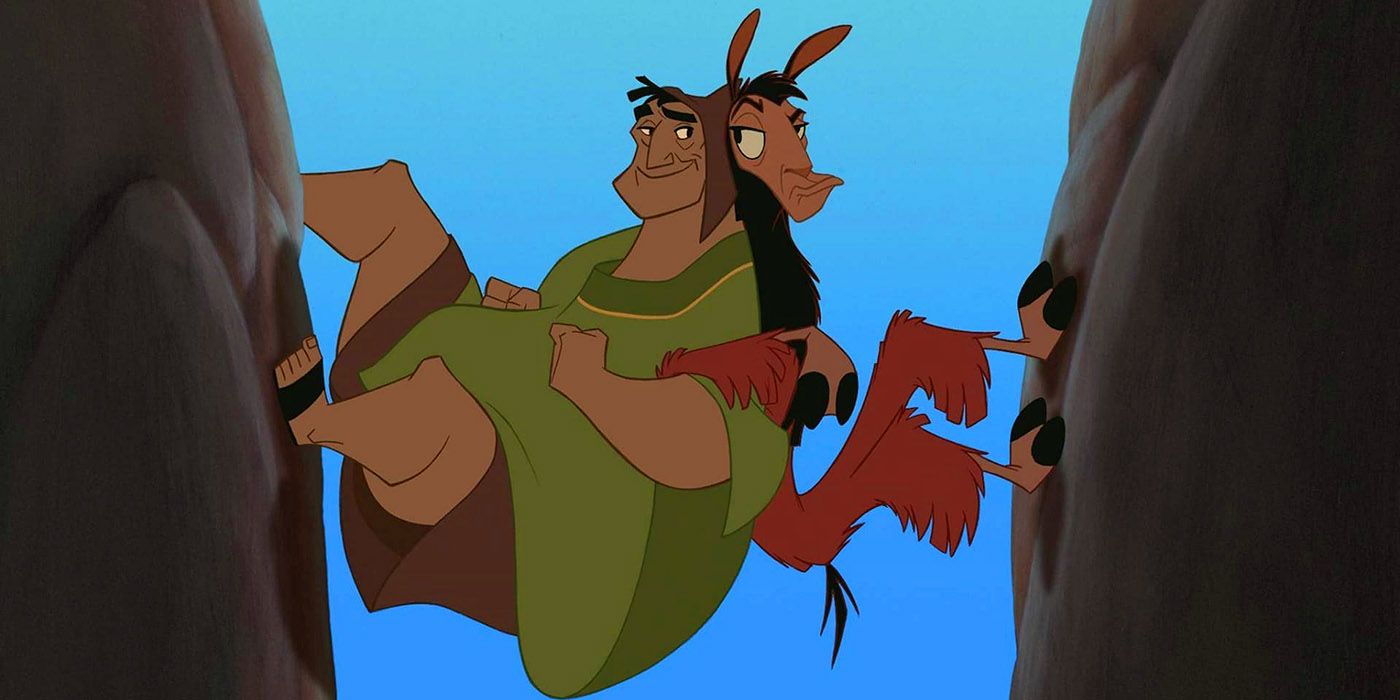The Disney Renaissance is often upheld as a serious highlight in the history of Walt Disney Animation Studios. It is typically defined as beginning in 1989 and ending in 1999, and it encompasses 10 films: The Little Mermaid, The Rescuers Down Under, Beauty & the Beast, Aladdin, The Lion King, Pocahontas, The Hunchback of Notre Dame, Hercules, Mulan and Tarzan.
But was Tarzan truly the final film of the era, or is there another movie that better encapsulates the moment when one of Hollywood's most important studios broke one of their most impressive winning streaks? Here are the films that could be considered the true end of the Disney Renaissance.
Pocahontas
Released halfway through the period, in 1995, Pocahontas was -- when compared to the films released earlier -- something of a disappointment. The Little Mermaid, Beauty & The Beast, Aladdin and The Lion King were massive hits for Disney, critically and commercially. Even the underperforming 1990 release The Rescuers Down Under came with the historical significance of helping to establish Pixar's connection with Disney, as explained in the documentary Waking Sleeping Beauty. Although the formula was becoming increasingly common in these films, the artistry, acting, writing and music all came together to create some of the era's most impressive animated movies.
But Pocahontas broke that near-perfect streak, with its historical revisionist take on the settlement of Jamestown and its relationship between Native American princess Pocahontas and English settler John Smith feeling like an odd hodgepodge of different tones and styles. The musical elements, slapstick animal sidekicks, heavy-handed message and dramatic flare fail to gel into a cohesive story, instead creating a muddled film that, despite impressive animation, feels like something engineered to earn accolades instead of just getting them through the virtue of its own craft. While the Disney Renaissance technically continued for an additional four films, there's a case to be made that Pocahontas is when the Renaissance really began to slip.
Tarzan
Released in 1999, Tarzan is widely considered the actual end of the Disney Renaissance. An adaptation of the classic novel about a man raised by apes, Tarzan was a decidedly more violent and action-packed film than most entries in the Disney canon. Even so, it still adhered to many of the era's standard traits, including multiple songs, cutting edge visuals and celebrity cameos in small roles. Tarzan remains a solid Disney movie, but it never quite reaches the heights of something like Aladdin.
However, this was the last usage of this specific Disney formula for some time. Subsequent films either embraced CGI effects, with new genres (Dinosaur and Chicken Little) and more action-packed material (Atlantis: The Lost Empire and Treasure Planet), or shifted into completely different tones and styles (Lilo & Stitch and The Emperor's New Groove). The formula codified in The Little Mermaid and then perfected across the rest of the Disney Renaissance fell out of favor with the studio for a while, and Tarzan can easily be seen as the swan song for the Disney Renaissance as a whole.
Dinosaur
A long-gestating project at Disney, Dinosaur was finally produced during the Disney Renaissance and released in 2000. Walt Disney Studios had utilized CGI for effects across the period, but Dinosaur was its first feature-length computer-animated film. The story centered around Aladar, a young dinosaur in prehistoric times who tries to lead his friends and family to a supposed "nesting grounds" while on the run from other carnivorous dinosaurs. A far more dramatic movie than most Disney films, Dinosaur was full of grim imagery and dark story beats. Although it was praised for its visuals, critical reception (as archived by Rotten Tomatoes) was mixed.
Fantasia 2000 was released between Tarzan and Dinosaur, with the anthology film feeling in many ways like a precursor to the era about to come. But Dinosaur was that change made concrete, with a far different style, story and craft on display than anything from preceding years. The impressively animated but narratively boring movie was a good indicator of how different Disney was about to become. Moreover, Dinosaur's overall forgettable nature, combined with other studios like Dreamworks and Pixar gaining attention, helped prove that Disney was out of the Renaissance.
The Emperor's New Groove
As reported by Vulture, the 2000 irreverent comedy The Emperor's New Groove started off as more of a typical Disney Renaissance movie. Originally envisioned as Kingdom of the Sun, the film was a largely straightforward musical adaptation of The Prince and the Pauper with an Incan setting. Sting was brought in to provide music, similar to how Phil Collins was the primary mind behind the music of Tarzan. It was even being developed by Roger Allers, the director of Lion King. However, pre-production proved to be a surprisingly tricky beast for the film, with early test screenings of the proposed storyboards falling flat for Disney executives.
Ultimately, it was David Reynolds (a writer for late-night comedy shows) who suggested the film be converted into a full-blown comedy. The project was immediately reworked with the new tone, resulting in the fast production of The Emperor's New Groove. It was a major departure from Disney's usual formula. Often compared to a Chuck Jones directed Looney Tune, The Emperor's New Groove signals the true end of the Disney Renaissance, fully ushering in a period of genuinely different and unique (if not always as enjoyable) movies. Eventually, the formula made something of a return in films like The Princess & the Frog and Tangled, but The Emperor's New Groove was one final (and hilarious) nail in the coffin for a major era of Disney animation.

